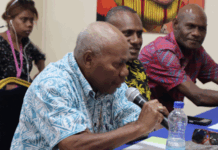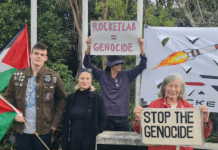
ANALYSIS: By Kalinga Seneviratne in Sydney
Indonesia’s popular tourism islands of Bali opened for tourism last week, while Thailand announced that from November 1 vaccinated travellers from 19 countries will be allowed to visit the kingdom including its tourism island of Phuket.
Both those countries’ tourism industry, which is a major revenue earner, has been devastated by more than 18 months of inactivity that have impacted on the livelihood of hundreds of thousands of people.
India and Vietnam also announced plans to open the country to vaccinated foreign tourists in November, and Australia will be opening its borders for foreign travel from mid-November for the first time since March 2020.
- READ MORE: New Zealand makes covid vaccines mandatory for doctors, teachers
- Other NZ covid lockdown reports
Countries in the Asia-Pacific region — except for China — are now beginning to grapple with balancing the damage to their economies from covid-19 pandemic by beginning to treat the virus as another flu.
The media may have to play a less adversarial role if this gamble is going to succeed.
October 11 was “Freedom Day” for Australia’s most populous city Sydney when it came out of almost four months of a tough lockdown.
Ironically this is happening while the daily covid-19 infection rates are higher than the figure that triggered the lockdowns in June.
‘It’s not going away’
Yet, New South Wales Premier Dominic Perrottet told Sky News on October 11: “we’ve got to live alongside the virus, it’s not going away, the best thing that we can do is protect our people (by better health services)”.
Singapore’s Prime Minister Lee Hsien Loong, addressing the nation on October 9, said: “Singapore cannot stay locked down and closed off indefinitely. It would not work, and it would be very costly”.
He added, “each time we tighten up, businesses are further disrupted, workers lose jobs, children are deprived of a proper childhood and school life”.
Singapore is coming out of lockdown when it is facing the highest rates of daily infections since the covid-19 outbreak.
Both Singapore and Australia adopted a “zero-covid” policy when the first wave of the pandemic hit, quickly closing the borders, and going into lockdown.
Both were exceptionally successful in controlling the virus and lifting the lockdowns late last year with almost zero covid-19 cases. But, when the more contagious delta virus hit both countries, fear came back forcing them back into lockdowns.
However, PM Lee told Singaporeans that lockdowns had “caused psychological and emotional strain, and mental fatigue for Singaporeans and for everyone else. Therefore, we concluded a few months ago that a “Zero covid” strategy was no longer feasible”.
‘Living with covid-19’
Thus, Singapore has changed its policy to “Living with covid-19”.
In a Facebook posting on October 10, Australian Prime Minister Scott Morrison said: “The phenomenal response from Australians to go and get vaccinated as we’ve seen those vaccination rates rise right across the country, means it’s now time that Australians are able to reclaim their lives. We’re beating covid, and we’re taking our lives back.”
On October 8, Australia’s Federal Health Minister Greg Hunt said that though infection rates might still be a bit high, yet less than 1 percent of those infected were in intensive care units (ICUs).
Why didn’t political leaders take this attitude right from the beginning and continue with it? After all the fatality rate of covid-19 has not been that much higher than the seasonal flu in most countries.
True, it was perhaps more contagious according to medical opinion, but fatality rates were not that large in percentage figures.
According to the Worldometer of health statistics, there have been 237.5 million covid-19 infections up to October this year and 214.6 million have recovered fully (90.4 percent) while 4.8 million have died (just over 2 percent).
According to the US Center for Disease Control and Prevention (CDC) estimates, there have been between 39-56 million flu cases, about 700,000 flu hospitalisations recorded in the US during the 2019-2020 flu season up to April 2020.
They also estimate between 24,000 to 62,000 flu deaths during the season. But did the media give these figures on a daily or even a weekly basis?
New global influenza strategy
In March 2019, WHO launched a new global influenza strategy pointing out that each year there is an estimated 1 billion flu cases of which 3-5 million are severe cases, resulting in 290,000 to 650,000 influenza-related respiratory deaths.
This has been happening for many years, but, yet the global media did not create the panic scenario that accompanied covid-19.
Unfortunately, the media’s adversarial reporting culture has helped to create a fear psychosis from the very beginning of the outbreak in early 2020, which may have contributed to millions of deaths by creating anxiety among those diagnosed with covid-19.
During the peak of the delta pandemic in India, many patients died from heart attacks triggered by anxiety. Would they have died if covid-19 were treated as another flu?
In the US out of the 44 million infected with covid-19 only 1.6 percent died. In Brazil from 21.5 million infected, 2.8 percent of them died, while in India out of 34 million infected only 1.3 percent died.
But what did we see in media reports? Piles of dead bodies being burnt in India, from Brazil bodies buried in mass graves by health workers wrapped in safety gear and in the US, people being rushed into ICUs.
They are just a small fraction of those infected.
Bleak picture of sensationalism
I was the co-editor of a book just released by a British publisher that looked at how the media across the world reported the covid-19 outbreak during 2020. It paints a bleak picture of sensationalism and adversarial reporting blended with racism and politicisation.
It all started with the outbreak in Wuhan in January 2020 when the global media transmitted unverified video clips of people dropping dead in the streets and dead bodies lying in pavements. Along with the focus on “unhygienic” wet markets in China this helped to project an image of China as a threat to the world.
It contributed to the fear psychosis that was built up by the media tinged with racism and politicisation.
If we are to live with covid and other flu viruses, greater investments need to be made in public health.
In Australia, health experts are talking about boosting hospital bed and ICU capacities to deal with the new policy of living with covid, and they have also warned of a shortage of health professionals, especially to staff ICUs.
What about if the media focus on these as national security priorities? Rather than giving daily death rates and sensational stories of people dying from covid — do we give daily death rates from heart attacks or suicide?
We should start discussing more about how to create sustainable safe communities as we recover from the pandemic, and that includes better investments in public health.
We need a journalism culture that is less adversarial and more tuned into promoting cooperation and community harmony.
Kalinga Seneviratne is co-editor of COVID-19, Racism and Politicization: Media in the Midst of a Pandemic published in August 2021 by Cambridge Scholars Publishers. IDN is the flagship agency of the Non-profit International Press Syndicate. This article is republished in partnership with IDN.












































